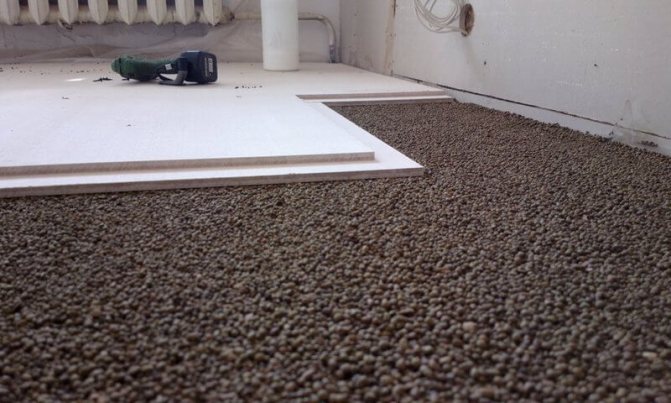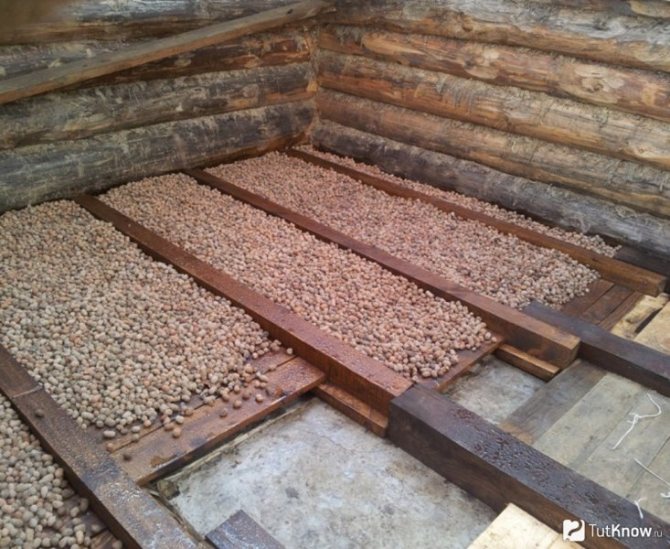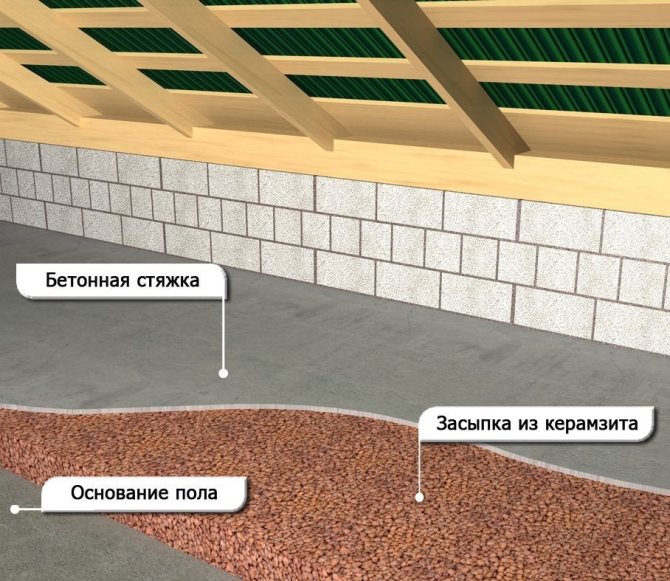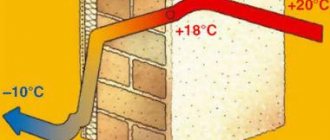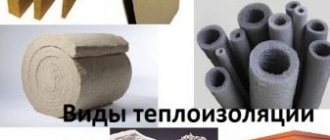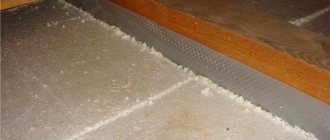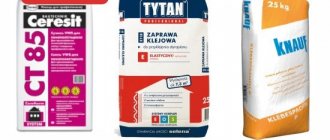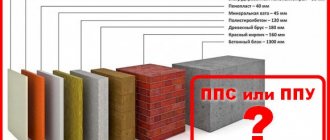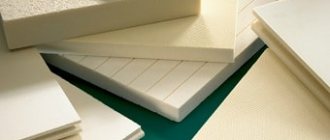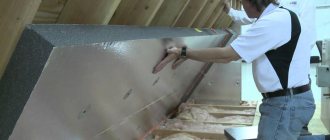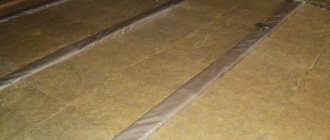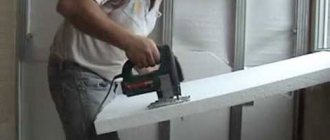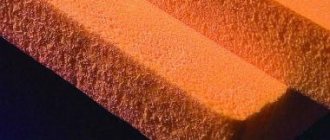One of the most important factors in creating a comfortable environment in a room is considered to be floor insulation with heat-insulating materials. The relevance of this parameter increases under the condition that groundwater runs close to the surface, in the areas of access to outside air, as well as on the border of unheated and heated premises.
Correctly carried out thermal insulation of the floor will allow you to set the proper temperature level in the room and reduce heating costs.
Materials used as heaters must have certain characteristics, including durability, moisture resistance, compressive strength and thermal conductivity. The technology of insulation differs depending on the type of material, the most common are expanded polystyrene, expanded plastic, expanded clay, foam, foam under the screed.
Floor insulation with expanded polystyrene
Expanded polystyrene is a gas-filled material obtained from copolymers of styrene and polystyrene. Gas-filled styrene granules are dissolved in a polymer mass, during the heating of which the volume of the original granules increases many times.
Expanded polystyrene is obtained by sintering granules.
Benefits:
- ease of use - polystyrene foam plates are easily cut with a knife or hacksaw, the material is attached with glue, cement mortar or mounting devices;
- a light weight;
- environmental Safety;
- resistance to chemical and biological influences;
- low cost;
- durability (over 50 years);
- moisture resistance;
- insulation.
Disadvantages:
- thermal deformation, at a temperature of + 80-90 degrees;
- flammability, gas-filled granules can ignite at high temperatures;
- instability to physical damage.
Floor insulation technology on logs
Wooden floor elements are treated with moisture-proof agents and antifungal agents, from the lower side of the logs, sheets of chipboard or boards are attached to self-tapping screws. Pre-cut to size sheets of expanded polystyrene are laid on them, a film is laid on top of the covering, after which the floor covering is laid.
Insulation of the floor on the balcony with foam or foam

Insulation of the balcony floor with penoplex
Penoplex is an extruded foam, so there is almost no big difference in the technology of laying foam and foam. The main difference is only in the properties of the material - penoplex is considered warmer. Penoplex plates are fastened with self-tapping screws.
Important! The screws themselves must also be plastic! Metal screws, due to constant vibration from walking on the balcony floor, will break the holes in the foam plates so much that the plates will no longer hold or the thermal insulation properties of the floor will become worse.
Before laying the foam panels with your own hands, the balcony floor must be leveled with a concrete screed, since it (do not forget!) Has a slope towards the street. The height of the concrete layer can be such that the screed reaches the zero level near the wall. Penoplex tiles can be installed starting from any corner of the balcony. In the penoplex slab, 2 holes are made, along which holes are marked on the floor. Using these marks, you need to drill holes in the balcony slab, and hammer in a plastic dowel.Then the plate is put in place and screwed on with plastic self-tapping screws. The slabs have locks that are used to dock during installation. Therefore, after installation, a warm floor made of polystyrene foam is one monolithic plate. Near the wall, a penoplex slab is trimmed with a knife or a special carpenter's cutter. Joints of slabs and walls can be sealed with cement mortar or polyurethane foam.


Insulation of the balcony floor with penoplex: solid base on top
Since penoplex is a rather soft material, a solid base must be laid on top of it. As in the first case, it can be a concrete screed, gypsum fiber board, chipboard or OSB. Ceramic tiles, linoleum, and other floor coverings can be laid on top of this base.
It is necessary to insulate the floor on the balcony with polystyrene in the same way as with penoplex, with the exception of one moment. After leveling the floor with a screed, it is jointed with wooden beams according to the size of the foam sheets. As a last resort, the foam can be cut to size. Foam plastic is placed in these cells, which is also fastened with plastic dowels in the balcony floor. On top of the insulated floor, you need to lay a plastic wrap so that the concrete solution does not moisten the wood.
Floor insulation with foam
Polyfoam is considered the most optimal material for floor insulation.
Benefits:
- versatility, the material can be used to insulate wooden and concrete floors, as well as walls, facades, roofs and ceilings;
- ease of installation, laying the foam does not require much effort, no dowels and other elements are needed to fix it, in some cases the use of glue is allowed;
- thermal insulation properties, in summer it is warm in such a house, and cold in winter;
- environmental safety, the material does not emit toxic and harmful substances into the atmosphere;
- resistance to biological and chemical substances.
Disadvantages:
- fragility;
- cracking under the influence of UV rays;
- fire resistance.
Technology
The process of foam insulation is as simple as possible; it does not require special skills. The density of the foam should be 35 kg / m, the thickness should be 20 mm.
A layer of polystyrene is laid on the concrete cover, free from dust and debris, without gaps.
All crevices and gouges must be pre-filled with filler or construction foam. Foam boards are laid on a polyethylene film in three ways: according to the basic installation, in a diagonal way, in a run-up. In the first case, the sheets are laid in regular rows parallel to the walls, in the second case at an angle of 45 degrees to the walls, in the latter case the angles at the joints of the slabs do not coincide.
With this method of insulation, the foam is covered with a plastic wrap on top, laying a laminate or floor tiles involves laying a PVC membrane, on top of which chipboard is placed.
The cement screed is poured onto a waterproofing film, the complete drying of which, depending on the layer thickness, takes 3-4 weeks.
Floor insulation with foam under the screed
Choosing penoplex for floor insulation using a concrete screed, it is better to opt for the modification of the "foundation". It has the greatest compression capacity.
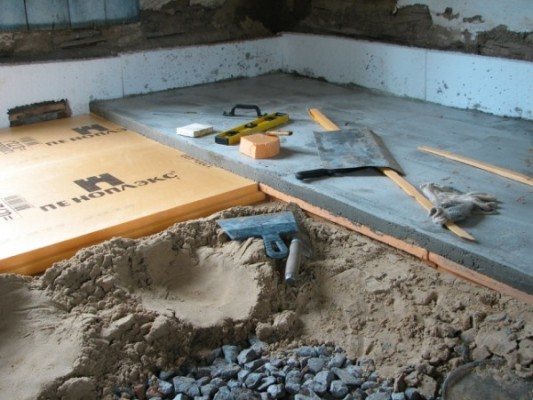

You need to pay attention to the depth of the opening in the room where the floor will be laid. The thickness of the screed will be about 50mm, the thickness of the topcoat is known to the performer. In order to get the floor at the desired level, in all likelihood, it will be necessary to inflate to a certain level.
For this, it is best to use expanded clay, which itself is a heat-insulating material.
Note that if there are no special conditions in the form of nearby subsoil waters, water protection measures can be omitted, as well as steam protection. By themselves, the materials used will ensure sufficient airtightness of the room.
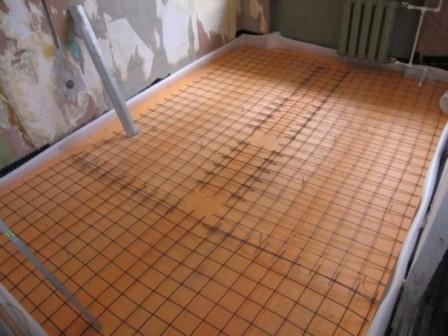

Work order:
Thoroughly level and tamp the expanded clay backing. For the insulating layer, it is best to use 20 mm thick foam plates. This material is produced profiled "in a quarter", it needs to be laid in two layers with overlapping.
The joints between the individual plates and along the walls must be glued with construction tape.
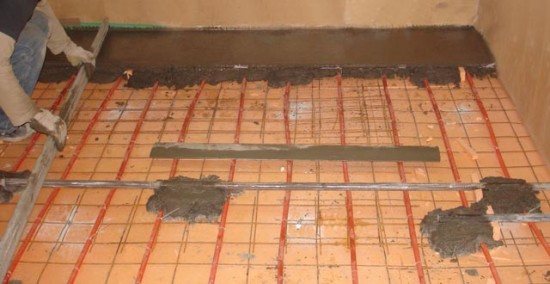

Install a reinforcing layer of road mesh with cells of 50x50 mm. Place the individual mesh cards on pads (chairs) with a thickness of 20 mm and fasten them between the knitting wire.
Install beacons over the mesh using wooden blocks or a profile pipe of the required size. At the level of the future floor, glue a damping tape about 5 mm thick to the wall. This will compensate for expansion of the screed due to seasonal fluctuations in floor temperature.
Filling is best done with the assistance of an assistant, with one worker stirring the mortar, the second laying and leveling the screed.
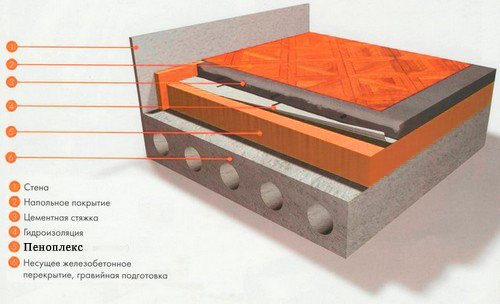

Further actions - according to the technology of screed manufacturing - when the solution is ready - removal of beacons, sealing of their placement, grouting or filling with a leveling layer.
The choice of 20 mm thick plates as insulation is determined by the properties of the insulation. The thickness of the double layer to perform the function is quite sufficient in a residential environmentwhere there are no extreme values of permissible temperatures.
Thermal insulation of the floor with expanded clay
Expanded clay is an environmentally friendly insulation, the material is a lightweight porous material obtained by quickly firing low-melting clays. Expanded clay consists of round or oval granules of different sizes.
Benefits:
- ease of installation;
- affordable cost;
- energy efficiency;
- soundproofing;
- resistance to temperature extremes;
- frost resistance;
- water absorption;
- environmental friendliness.
disadvantages
- fragility;
- the thickness of the insulating layer imposes restrictions on the use in rooms with low ceilings.
Technology
Expanded clay can be used to insulate concrete and wood floors.
After cleaning from dirt and dismantling the old floor covering, a layer of waterproofing is laid. The installation of the thermal insulation film is overlapped, the joints are glued with special tape. It should be borne in mind that the film should go behind the wall at a distance of 8-10 cm.
At the next stage, expanded clay is filled up, while shrinkage must be taken into account. The thickness of the thermal insulation layer should not exceed 15 cm; expanded clay of different fractions is used for backfilling. At the final stage, a leveling screed is applied.
In the process of floor insulation, it is necessary to take into account the loads; the energy efficiency and bearing capacity of the floor depend on the thickness of the expanded clay layer. A layer of 15 cm provides an adequate level of thermal insulation, but the floor may not withstand dynamic and static loads.
Penoplex floor insulation
Floor insulation
Floor insulation is one of the most important operations at the stage of repair or construction and installation work. The most common materials used for floor insulation are expanded clay and penoplex.
Expanded clay
Expanded clay is an affordable material that is actively used as insulation. Expanded clay is a porous granules of low-melting clay.
Advantages of expanded clay
1) Low price.
2) Environmentally friendly material, in the production of which natural clays are used.
3) Ease of filling the space - expanded clay is used as a warming bedding.
4) High sound insulation and sound absorption.
Disadvantages of expanded clay
1) Enhanced moisture absorption reduces the heat-shielding properties of the insulation. Therefore, expanded clay as insulation requires additional use of layers of vapor barrier and waterproofing.
2) When insulating with expanded clay bedding, the thickness of the floor increases.
3) The process of warming has a number of limitations, since it is not always possible to apply bedding.
Penoplex
This material has a lot in common with foam, since it belongs to its counterparts. In terms of chemical composition, penoplex is extruded polystyrene foam. It is stronger than polystyrene, does not deform, and has a long service life. It practically does not absorb moisture, so it can be used in rooms with high humidity, for example, in bathrooms of houses and apartments. Penoplex refers to environmentally friendly materials.
Penoplex advantages
1) High strength and excellent deformation resistance.
2) Reducing the thickness of the insulation due to its excellent heat-shielding characteristics.
3) Convenience of work - penoplex is easy to cut, mount both on horizontal and vertical surfaces.
4) Long service life.
5) The absence of water absorption allows the use of penoplex without additional waterproofing in rooms with high humidity.
6) Lack of rotting and formation of fungus.
7) Environmental friendliness.
Of the disadvantages of penoplex in comparison with expanded clay, only a difference in price can be distinguished. However, the vast majority of the advantages of penoplex cover the difference in price. Expanded clay can be used as insulation of houses on the ground. Expanded clay is also used to insulate secondary rooms, for example, a loggia or a balcony. Penoplex is preferable for warming apartments.
The process of floor insulation in a house or cottage using expanded clay:
- On the previously tamped soil, we lay a layer of gravel about 30 cm, which will serve as a pillow.
- We tamp the gravel.
- Pour a 10 cm layer of sand on top.
- We re-tamp the gravel so that the sand spills into all the gaps between its granules.
- We make a bedding of expanded clay in a thickness of 20 cm.
- We put plastic wrap.
- We fill in the reinforced cement-sand screed.
The process of floor insulation in the apartment:
- On the subfloor, we overlap in a checkerboard pattern two layers of penoplex to avoid cold bridges.
- To avoid moisture penetration, we lay a waterproofing from a polyethylene film.
- We fill in the reinforced cement-sand screed.
Floor insulation with penoplex
Penoplex is a versatile material that can be used to insulate all elements of buildings. It is ideal for insulating the first floors of basement buildings.
Benefits:
- high thermal insulation properties;
- uniform structure;
- low level of thermal conductivity;
- compressive strength;
- boards are easily glued and cut;
- long service life;
- ease of installation;
- affordable cost.
Disadvantages:
- low level of vapor permeability;
- fire hazard;
- susceptibility to rodent attacks.
Technology
This option is supposed to be used for insulating wooden houses on a columnar foundation. The material is laid on the ground, in the gap between the logs and the ground surface. The process of warming consists of several stages, if the insulation is carried out not in a building under construction, but in a residential one, all old boards are removed and, if necessary, replaced with new ones.
At the next stage, the installation of the lags is carried out, the installation of the first bar is carried out at the building level, after which another bar is installed from the opposite end. A strong thread or fishing line is pulled between the logs, after which the remaining bars are installed. A waterproofing film is laid on the logs, the edges of which should reach the middle of the log.
Fastening of waterproofing to the beams is carried out using a construction stapler.Foam plates are laid on top of the film, to retain heat in the room, the material is staggered, all seams are filled with polyurethane foam. The composition of the polyurethane foam should not contain toluene, as it has a destructive effect on the penoplex.
After filling the seams, the material is attached with construction glue or dowels to the logs, boards are nailed over the insulation.
Penoplex floor insulation technologies
Penoplex floor insulation can be done on a sand and gravel base, concrete or wooden floors. There are several main types of floors, hence methods their insulation:
- Floor insulation with logs.
- Insulation under the screed.
- Insulation when laying on the ground.
Thermal insulation of a wooden floor with logs
At the initial stage, the damaged areas on the logs and wooden boards lying on them are replaced, then they are impregnated with an antiseptic or drying oil for prevent rotting.
Then you need to fill everything crevices and notches on boards with wood putty. At the next stage, the wooden surface is primed and dried.
Penoplex plates are cut according to the distance between the logs and the length of the room. They are laid on dried boards, the joints between the sheets should be as dense as possible and glued with construction tape.
Further insulation close a vapor barrier material, the sheets of which are overlapped. Boards, sheets of plywood or chipboard are attached on top of it. The surface of the selected material must be absolutely flat. At the end, the flooring is being laid (linoleum, laminate, parquet).
Insulation layers wooden floor:
- Beams.
- Wooden boards.
- Penoplex.
- Vapor barrier.
- Wooden shield.
- Flooring.
Floor insulation under the screed
To insulate the floor with foam under the screed with your own hands, it is recommended to choose modification "foundation".
This type of penoplex is indicated "Penoplex-F" and has the best compression performance. It can withstand loads of up to 27 kg per cm².
More detailed characteristics of this material can be found in the article "Technical characteristics and features of Penoplex Foundation".
At the initial stage of insulation, a layer of primer is applied to the concrete base. After drying begin to lay sheets of foam. They are glued to the base with foam, putty or special glue. In this case, the floor surface should be as flat as possible. The joints of the sheets are glued with construction tape.
Next, a layer of waterproofing is laid and fixed with a reinforcing mesh. Then, at the level of the future floor, a damping tape 0.5 cm thick is glued to the wall. compensates for the expansion screeds for fluctuating floor temperatures.
Screed mortar applied to the grid and leveled along the lighthouse rails. The mortar consists of cement and sand in a ratio of 1 to 3 or 1 to 4, depending on the brand of cement. The finishing step is the installation of the floor covering.
Layers of construction insulation:
- Concrete slab.
- Penoplex.
- Waterproofing layer.
- Reinforcing mesh.
- Concrete screed layer
- Flooring.
Warming of floors with foam on the ground
It is also possible to insulate the floors in the house, which stands on a strip or pile foundation, with penoplex. This method is called "Laying on the ground".
The method can be applied subject to some conditions:
- Absence under the basement floor.
- If the groundwater runs at a depth of at least 4-5 meters.
- The presence of heating in the room, otherwise the freezing of the soil layer can lead to deformation of the insulation structure.
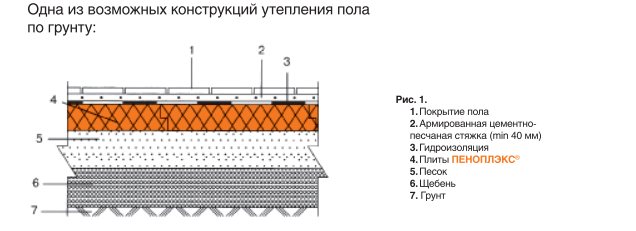

The first stage of installing the insulation is leveling and compaction of the earth layer. Next, a pillow is poured on it from a layer of crushed stone and gravel. Then the sand is poured out and compacted.
Penoplex sheets are placed on the sand. Plates begin to spread from the corner, pressing tightly one to the other.To avoid cold penetration, it is recommended to use slabs with thorn-groove edges.
Further as protective layer a waterproofing film is laid on the sheets of penoplex and its edges are brought up along the wall.
For increased durability the floor on the ground is reinforced with a metal mesh. Next, a screed is poured from a mixture of sand and cement. The final step is to lay the floor covering on the dried cement layer.
Layers of construction insulation:
- Priming.
- A layer of crushed stone and gravel.
- Sandy "pillow".
- Penoplex.
- Waterproofing layer.
- Reinforced screed.
- Cement strainer.
- Flooring.
Floor insulation with foam plastic under the screed
Polyfoam is considered one of the most common insulation materials, the material is widely used to insulate not only the floor, but also walls and foundations.
Benefits:
- ease of installation;
- low consumption;
- no need for vapor barrier;
- long service life;
- resistance to microorganisms.
Disadvantages:
- ease of ignition;
- significant harm from rodents.
Technology
The insulation process consists of several stages.
All cracks and dents are removed on a surface cleaned of dust and dirt; for this purpose, construction foam, putty or concrete are used. A prerequisite is that the floor must be perfectly flat, the level of thermal insulation depends on the density of the foam plastic to its surface. If this condition is not observed, so-called "cold bridges" are formed on the floor, which can significantly reduce the effect of insulation.
At the next stage, waterproofing is laid, which is most often used as ordinary polyethylene. To increase the tightness of the flooring, the joining areas are glued with tape, after which the insulation is laid. In this case, foam of a certain brand and density is used, the thickness of which should be 5 cm.
Next, the outer layer is reinforced with a screed 1.5-2 cm thick, on top of which a reinforcing mesh is laid. At the final stage, the construction concrete mixture is poured, the layer should be 5-6 cm.
Warming with expanded clay
Expanded clay is a porous granules of clay rock. It is these air pores that help trap heat inside the floor. Expanded clay pebbles do not burn in fire, and do not drown in water. Therefore, it is the most refractory and safe material.
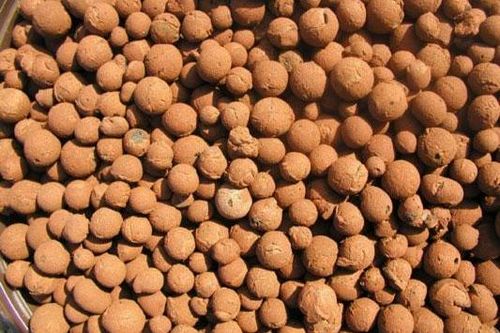

Expanded clay is small clay pebbles
As a heater, it is effective only with a layer of 10-15 cm. This means that the floor will have to be raised that much. This is a minus.
But there are more pluses. This material has good thermal insulation properties. For example, 10 cm of expanded clay are comparable in thermal conductivity with 1 m thick brick masonry. Expanded clay is also light and durable. Non-toxic and retains its properties for many years.
Expanded clay is very cheap. It is chosen by those who value environmentally friendly and natural materials.
How to lay expanded clay
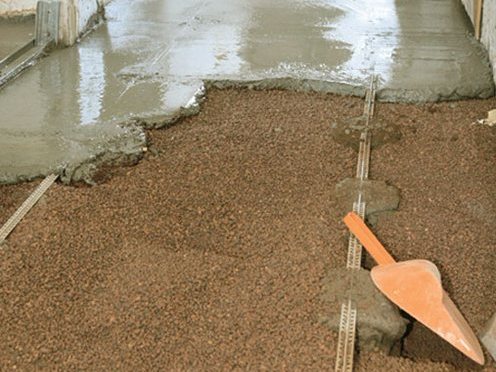

The screed must be thick so that the expanded clay does not move
How to properly insulate the balcony floor with expanded clay? We describe:
> 1. Pour expanded clay on the surface of the floor in a layer of 10 cm. Use the largest granules. They will slip less while you pour the solution.> 2. Next, make a screed (yes, thicker!) No more than 3 cm thick on top of it. At the same time, the solution should spread evenly and go into the depths, grasping the entire layer of expanded clay.> 3. When you start pouring, try not to step on the expanded clay. Use islands made of plywood or any other material to move on the floor.> 4. The last stage of warming the floor on the balcony with expanded clay is to iron the coating with a needle roller. Then the floor will be even and neat.
Floor insulation with polyurethane foam
Polyurethane foam has recently been used more and more often for floor insulation, despite its rather high cost. The costs are fully paid off due to the absence of costs for waterproofing and vapor barrier coating, surface lathing and additional installation work.
Benefits:
- durability (from 50 years);
- speed and ease of installation;
- moisture resistance;
- safety;
- lack of "cold bridges".
Disadvantages:
- the need for protection from sunlight;
- the need to use additional equipment and workwear.
Technology
Polyurethane foam is sprayed onto a surface previously cleaned of dust and dirt in an even layer. The method allows you to create an integral layer without cracks and gaps, provides surface insulation of the most complex configuration.
Floor insulation with penofol
Penofol is a multi-layer material of the class of reflective insulation, consists of a base layer and polished foil. Polyethylene foam of different thickness, structure and density is used as a base.
Benefits:
- environmental friendliness;
- no need for additional vapor barrier;
- soundproofing;
- ease of installation;
- fire safety;
- ease of transportation;
- inaccessibility for rodents.
Disadvantages:
- softness;
- complexity of installation;
- use as additional material.
Technology
The material is laid over the entire surface of the floor covering with the metal side up. A 20-millimeter air gap is created in front of it, all joints formed during the laying process are provided with reliable tightness.
Aluminum adhesive tape is excellent for this. On top of the insulation, a material is laid to ensure the hardness of the base. Hardboard is considered the best option in this case; any floor covering can be used as a finish.
Thermal insulation of the floor with ecowool
Ecowool is made of natural materials, 20% of it consists of waste paper, 20% - of natural additives. Cellulose fibers are used as a base, boric acid and lingin are the binder.
Benefits:
- environmental friendliness;
- low thermal conductivity;
- fire safety;
- restoration of thermal insulation properties after drying.
Disadvantages:
- high price.
